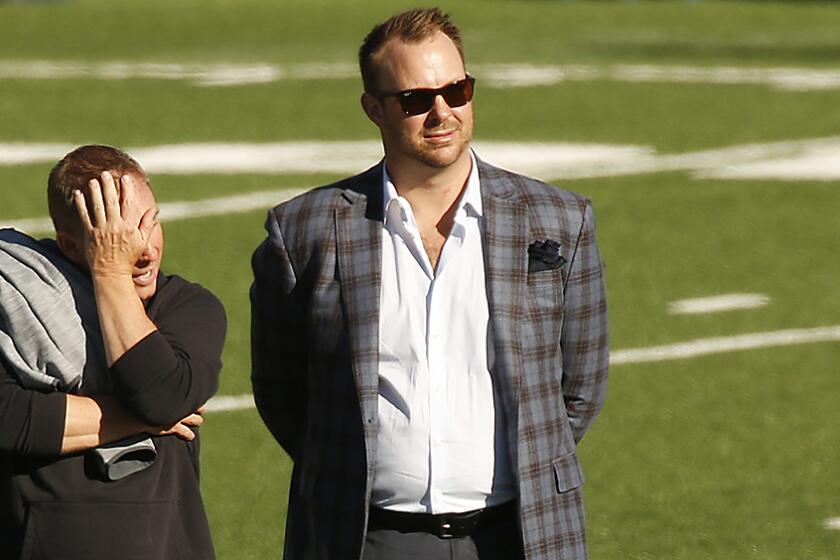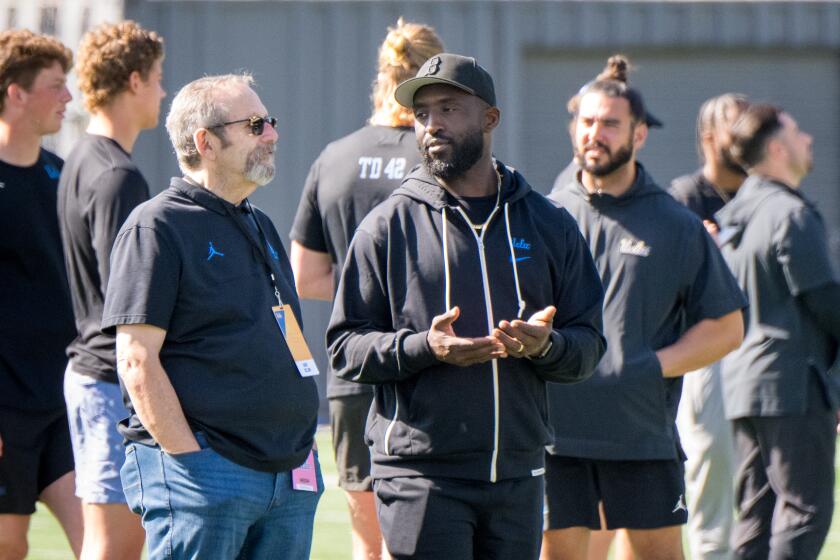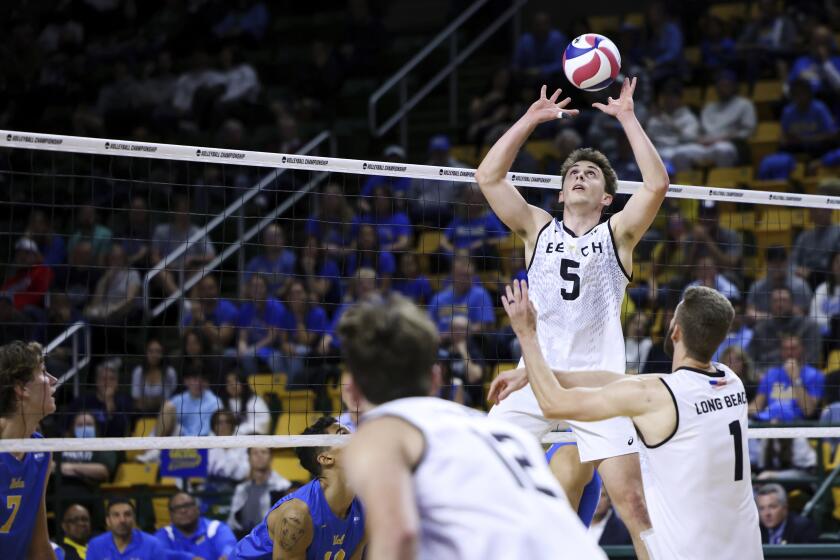Bruins helped take game to new level
March Madness is upon us again, with dozens of games on the tube over the next few days. But it wasn’t always that way. When I was playing for UCLA, few games were aired in prime time, and the tournament field was only about two dozen teams.
As I look back some 40 years, I can now appreciate the role I played in helping TV executives decide that college basketball was ready for prime time.
The 1967 tournament was my first trip to the Final Four. It seemed unlikely we would win because we had no seniors. Mike Warren, our captain, was the oldest player and he was a junior. The rest of the starters were sophomores.
In the semifinals we played Houston in front of a sold-out crowd in Louisville, Ky. We beat Houston in that semifinal, 73-58, and went on to defeat Dayton in the final, giving UCLA its third NCAA championship in four years. In the end, this tournament had not seemed much more difficult than the New York City schoolboy tournament, and really helped me feel confident about UCLA’s ability to win big games.
I got a chance to meet Elvin Hayes and some of his Houston teammates and establish a friendship that has lasted over all these years.
We never talked about that game, but we hung out at the hotel and spoke about the usual subjects college boys talk about, such as coeds, classes and coeds.
In 1968, TSN took a gamble and decided to broadcast UCLA’s regular-season game with Houston in prime time. The so-called experts questioned the decision. After all, they said, who cares about college basketball?
But there was widespread interest in this game. It was played in front of 50,000 fans in the Astrodome and was a ratings smash. Hayes had an incredible game and led his team to a 71-69 victory. It was dramatic proof of the nationwide interest in college basketball. From that day forward, more and more broadcasters saw college basketball as a game worth televising. It wasn’t too long before the NCAA expanded the field to 32 teams and, eventually, 64.
I took a Sports Illustrated cover showing Elvin shooting a jump shot in the Astrodome game and hung it in my locker. It provided a daily incentive for me to be at my best the next time that we met. Coach Wooden told us that we might get another shot at Houston, especially if we did what we needed to do in closing out our season. I felt we lost that game only because an eye injury had me seeing double and had kept me from practicing with the team for over a week. It turned out to be the only game of my UCLA varsity career where I shot less than 50% from the field.
Still, the media people who had liked UCLA as No. 1 quickly jumped off that bandwagon and were touting Houston as the team to beat. Elvin was eventually voted player of the year. My teammates and I were determined to change people’s opinions if we got a second chance to play Houston.
That chance came in the 1968 semifinals at the Los Angeles Sports Arena, when we probably played our most effective game while I was on the team. We ran Houston off the court, winning by 32 points and silencing all of our critics. We went on to defeat North Carolina for the championship -- the second of what would become seven in a row.
But it wasn’t just the games that stick with me. Traveling to and from them could be memorable too.
My junior year we were scheduled to play in Chicago during the holiday season. On the flight we were informed that Chicago would be hit by a major snowstorm and the airport was being shut down.
It was decided that we would land in St. Louis and take the train to Chicago, an eight-hour ride during a major snowstorm. Coach Wooden seemed to always know where we were. We were joined on the train by many college students on their way home for Christmas.
We finally pulled into Union Station in Chicago around midnight and we were literally the last people to make it into town for three days. The snowstorm we traveled through was historic in its intensity and we were stuck in Chicago for about six days.
We did play two games at Chicago Stadium, beating Loyola of Chicago and Northwestern. On the day we left, bodies were found inside cars that had been covered with snow and gone unnoticed.
On these trips we were able to learn about each other in ways that helped me understand how complex human nature can be. I remember a bus ride in Indiana where my teammates and I discussed religion.
A big issue for me was whether I should stay in college or become a professional early. College athletes are not compensated for what they do and I think that is not a good situation.
When I was in college, I could not play in the NBA until my high school class came up for graduation. The emergence of the ABA at that time gave me an option and also it would have been possible for me to play for the Globetrotters as Wilt Chamberlain had chosen to do.
I was aware that an injury could end my career, so having my diploma was a valuable safety net. I didn’t want to end up some injured has-been with no education or options.
My final year, UCLA beat a very good Purdue team in the finals. That game was notable for the outstanding defensive job that Ken Heitz had guarding Purdue’s Rick Mount. One of the ironies of that game was that Coach Wooden had attended Purdue and was an All-American for the Boilermakers. Yet he never spoke about it to the team.
We won our third consecutive championship. By being chosen as the Outstanding Tournament Player, I knew I had secured my legacy as a college player.
The tournament has become part and parcel of a national pageant.
The enthusiasm of the participants is so much intertwined with the games that fan participation, including rabid fans with their heads shaved and painted in various colors, has become a part of the show.
Schools with limited resources can afford a team and in the right circumstances win it all. Cinderella teams are always going to be part of the show and they make it all the more interesting.
Let the madness begin.
--
Abdul-Jabbar, recently named the greatest player in college basketball history in an ESPN poll, is the author of “On the Shoulders of Giants: My Journey Through the Harlem Renaissance” and other books.
--
ON THE WEB
Strength training is a must in the care and maintenance for those athletes over 50, Kareem says. For more insights from the NBA’s all-time leading scorer, go to latimesblogs.latimes.com/kareem.
Go beyond the scoreboard
Get the latest on L.A.'s teams in the daily Sports Report newsletter.
You may occasionally receive promotional content from the Los Angeles Times.



